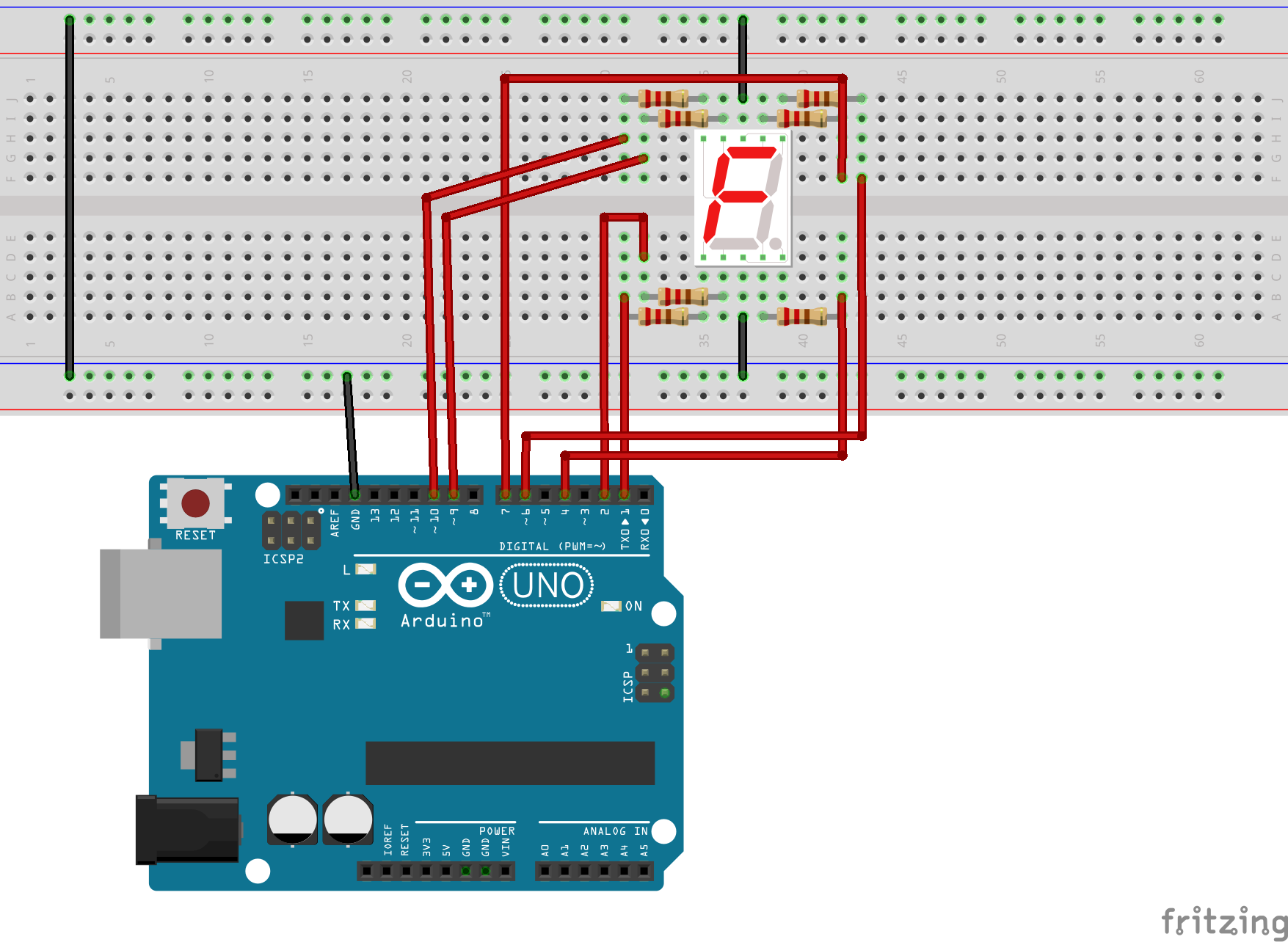Driving a 7-segment display using Arduino UNO
Supposedly, our laboratory assignment for our Digital Electronics class is driving a 7-Segment display. However, we weren’t able to perform it due to time constraint brought by the Typhoon Odette. Curios as I am, I decided to perform it anyway without lab intruction from our instructor. My first attempt is to use an Arduino UNO to drive 7-segment display by mapping the corresponsing segments for a decimal digit and store it as an array.

Video Demo: Driving a 7-segment display using Arduino UNO
7-Segment Displays
From the name itself, 7-segment display is just 7 LEDs arranged in a manner shown below.

Each segment as a corresponding pin which to need to power on/off depending on the digit we want to display. For our purpose, we want to display digits 0 to 9.
Components Used
- Arduino UNO
- 7-Segment LED (5011AS)
- 7 x 220 Ohm resistors
- Jumper wires
- Breadboard
Circuit Schematic

Code
/*
* Drive a 7-segment display 5011AS from 0 to 9
*
* Author: Harvey Labis Abiagador
* created: January 28, 2022
*/
int segments[7] = {1, 2, 4, 6, 7, 9, 10};
const int segments_size = 7;
// mapping of decimals to corresponding segments
// 1 - HIGH or ON, 0 - LOW or OFF
const int zero[7] = {1, 1, 1, 1, 1, 1, 0};
const int one[7] = {0, 0, 1, 1, 0, 0, 0};
const int two[7] = {1, 1, 0, 1, 1, 0, 1};
const int three[7]= {0, 1, 1, 1, 1, 0, 1};
const int four[7] = {0, 0, 1, 1, 0, 1, 1};
const int five[7] = {0, 1, 1, 0, 1, 1, 1};
const int six[7] = {1, 1, 1, 0, 1, 1, 1};
const int seven[7]= {0, 0, 1, 1, 1, 0, 0};
const int eight[7]= {1, 1, 1, 1, 1, 1, 1};
const int nine[7] = {0, 1, 1, 1, 1, 1, 1};
const int off[7] = {0, 0, 0, 0, 0, 0, 0};
void setup() {
for (int i = 0; i < segments_size; i++){
pinMode(segments[i], OUTPUT);
digitalWrite(segments[i], LOW);
}
}
void loop() {
for (int c = 0; c < 10; c++){
switch (c){
case 0:
light(zero);
break;
case 1:
light(one);
break;
case 2:
light(two);
break;
case 3:
light(three);
break;
case 4:
light(four);
break;
case 5:
light(five);
break;
case 6:
light(six);
break;
case 7:
light(seven);
break;
case 8:
light(eight);
break;
case 9:
light(nine);
break;
default:
light(off);
}
delay(1000);
}
}
void light(int pinStatus[]){
for (int p = 0; p < segments_size; p++){
digitalWrite(segments[p], pinStatus[p]);
}
}